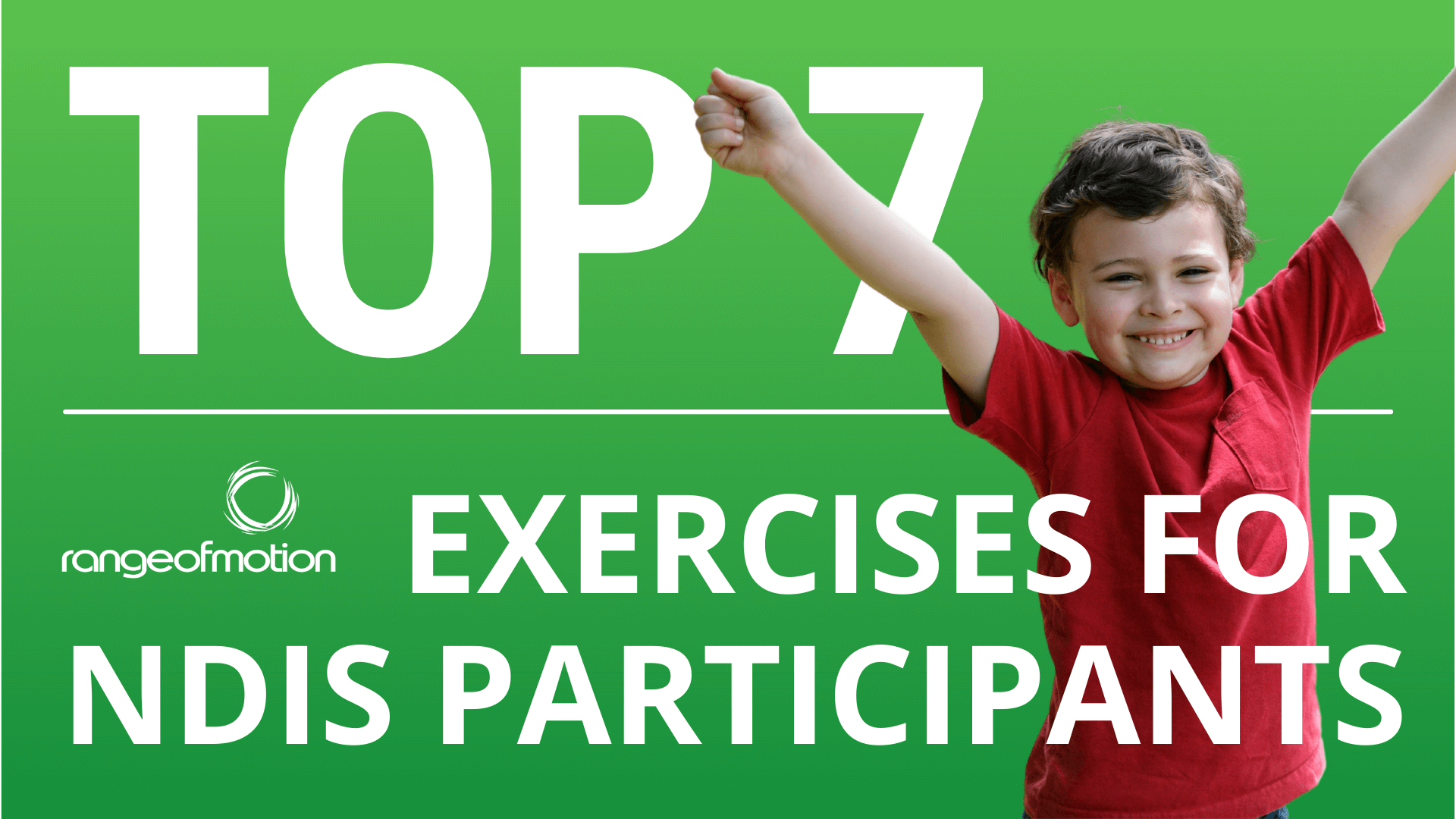While we realise there is a huge range of abilities for NDIS participants, we’ve created a ‘top seven’ list for exercise we think they should build towards.
Of course, there needs to be a huge degree of individualisation and variation to suit the unique needs of the participant, but if you include these exercises (or versions of them) in your exercise program, you’re well on the way to a whole range of heath benefits.
Let’s count down our top seven.
7. Walking
Grossly underrated! Walking is often disregarded by hardcore exercisers because it’s low intensity. While they have a point, we shouldn’t forget the mental, psychological and social benefits that come from a long walk – and this is particularly important for NDIS participants.
For bonus points, walk with a friend or carer, outside in nature, in the sun (within reason) and over uneven terrain.
6. Trap bar deadlift
The ‘trap bar’ is a hexagonal shaped bar with parallel handles, We couldn’t have created a ‘top seven’ list without some form of deadlift and, in our opinion, the trap bar deadlift is most versatile.
This is a great way to teach participants to safely pick up objects from the ground with a strong, stable lower back.
As well as strength, this is a great way to teach and develop good posture.
5. Sit to stand
Basically, you sit on a low chair, then stand back up. Repeat. That’s it. There are few exercises that have as much carry-over into the ‘real world’.
The biggest benefits – it’s so simple to do, needs no coaching, and can be done by anyone with the ability to stand with assistance (at varying heights of chair).
4. Air bike
The air bike is the only ‘machine’ on our list, but it’s here for good reason.
Firstly, there’s no part of your body that won’t benefit. The anterior and posterior chains of your lower body will be working, as will both the pushing and pulling muscles of your upper body. Nothing is safe!
This ‘full body effect’ means that not only will each part of your body benefit, but there’s a massive requirement to pump blood around the body to deliver oxygen and energy and remove carbon dioxide and waste. The high demands of this movement make it highly, highly effective.
All energy systems can be targeted. Very short efforts can build power. High intensity sprint work will have a massive systemic impact on the body. Longer continuous efforts are great for cardiorespiratory system development.
This machine is also simple to use. And while simplicity isn’t always a good thing, it’s a great tool to create a range of benefits for people with lower coordination levels without the need for much coaching.
3. Squat clean thruster
This is definitely the most complex movement on our list, and it’s here for good reason.
There is sometimes a tendency to ‘water down’ exercise for NDIS participants. And while this is often necessary, sometimes it’s possible to pigeon-hole participants – meaning they’re not challenged.
Virtually every single major movement the body can perform is combined in a squat clean thruster. The posterior chain and upper body puling musculature is attacked during the pull from the ground to full extension. The anterior chain is responsible for standing up from the deep squat, where the pressing muscles of the upper body take over to complete the repetition.
This movement is challenging and requires good coaching. But if you can find someone to teach you, it’s a powerful tool in the arsenal of an NDIS participant.
2. Prowler push/pull
The prowler (or sled) has enormous upside, and very little downside.
We’re going to be a little cheeky here and (technically) include two movements at the number two ranking. The first is a prowler push, where you place your hands on upright vertical handles and push the prowler forwards. The second is a backwards drag, where you grip handles connected to the prowler by rope (or place a belt around your waist) and walk backwards.
Loading the prowler up with weights and fighting through a slow, grinding lap will make you strong. Dropping to moderate weight for high intensity repeated sprints will build an enormous anaerobic energy system. Reducing the weight for long unbroken efforts will build your aerobic capacity.
It’s also very hard to do these movements wrong – making it a great tool for NDIS participants who want to get a lot of benefit without the need for high levels of coordination or coaching. Plus, the injury rates are really low. They’re also great for people with joint injuries – where they can work very hard without aggravation.
1. Loaded carries
Number one of our list is the loaded carry. Picking up something heavy, and carrying it.
There are many different exercises we can classify as ‘loaded carries’, with many different implements.
You can carry things by your side, on your shoulder, hugged in to your chest, or in any other position you can imagine. And it doesn’t matter what you carry – in fact, the more awkward and unusual the object is, the better transfer it will have to your everyday life.
Loaded carries will make you strong and powerful. They’ll also build adaptability and functionality by challenging your body in ways it’s not used to.
What’s missing in your exercise program? Regardless of your level of ability, work your way through this list and reap the benefits!
Range of Motion, in Osborne Park, provides Exercise Physiology Services for NDIS participants. An exceptionally high standard of one-on-one expert care, in a safe, friendly environment. Learn more about our exercise programs for NDIS participants.





